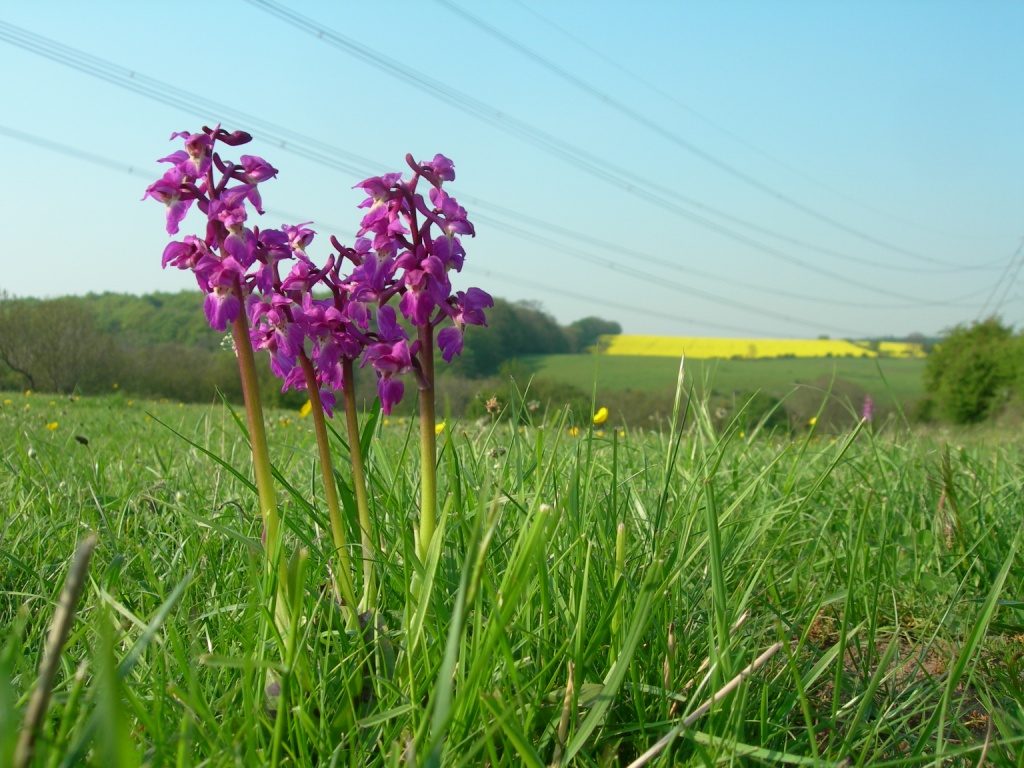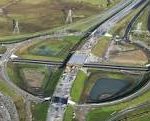The long awaited construction of the new M18 motorway will bypass the towns of Ardrahan, Kilcolgan and Clarenbridge and Claregalway and the agreed route will take motorists through the northern part of the Burren, a site that is internationally famous for its flora and fauna. In a field near Ardrahan, nine different species of Orchids were due to be dug up and destroyed to accommodate the motorway route.
Peter Butler came upon the field in the Spring of 2014. The field, at that time of year was festooned with the Early Purple Orchid. Over the summer other species like the Common Spotted would replace that early arrival and in the best tradition of nature as one of the species died away, it was replaced by others such as the O’Kelly‘s Spotted, the Bee, the Fragrant and the Twayblade. The field had never been tilled or fertilized and was used only to graze some goats and cattle to help maintain the grass levels. From the point of view of a lover of nature, an ecological activist and a conservationist such as Peter this was a gem.
The following is an interview with Peter on how some of orchids were saved and moved to a new site at Rinville Park, Oranmore, the logistics of moving the rare species, the challenges facing the orchids in their new home and future plans for the management of the site.
How did you become involved in this project?
In my work capacity I work in a management role with Galway Mayo Institute of Technology. In my personal capacity I am a Leader of walks with the Clarenbridge-based Oyster Walking Club. I am Press Officer for Friends of Merlin Woods and was previously Press Officer for the Galway Anti-Incineration Campaign. I have walks all over the Burren for the past 25 years. I have always been impressed with the unusual and rare species of flower on the Burren and particularly the Orchids that grow there. I am a conservationist by nature and an ecological activist (Green Party).
My background is in Engineering, Project management and I also hold a Business degree. I had watched with interest, the proposed planning of the M18 motorway since 2005 and monitored its progress and the proposed route. So I followed developments and walked and drove the route with maps which were readily available. I came across this field near Ardrahan. Nobody had ever tilled or fertilized the field as it was full of rocks and in terms of bio diversity it was an absolute gem. I saw that the motorway was planned to go straight through the field and that there were species of Orchids there that could be removed.
How did you plan the removal and relocation of the Orchids?
The field was close to the road so taking the Orchids out was logistically possible. However I realised that I would need a lot of help to take out the 250m² field which consisted of between 2000 to 3000 sods and that it was going to require a significant amount of volunteer effort. I contacted the relevant authorities for approval including the NRA, Galway County Council, Lagan Construction, and also Dan Clabby of Conservation Ireland Volunteers to seek help with the logistics. I also contacted the National Parks and Wildlife Services who gave me their full support and provided advice on an appropriate suitable relocation site. We surveyed the lands over the summer and found nine species of Orchids and rare species of other plants. In terms of the new site, we were preferably looking for public lands.
The location of site at Rinville Park came to us from information provided by Elaine O’Riordan, Co Galway Bio Diversity officer and Stephen Lally who is the Parks officer at Rinville Park. Following on from that Oranmore Tidy Towns came on board and it became a joint volunteer project between the Conservation Volunteers and Oranmore Tidy Towns. The site was flat and needed to be landscaped and made uneven and this was achieved through the generosity of Gerry McNulty Oranmore and Lagan Construction. However to bring this to fruition required enormous networking, project management which in the main was my role in the project.




